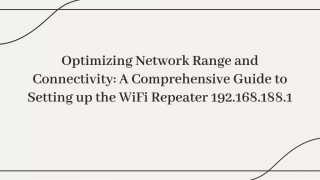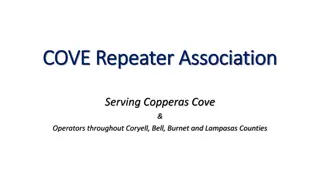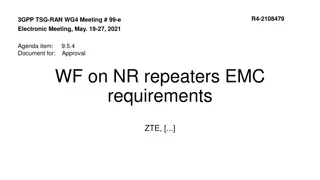
Understanding Amateur Radio Repeaters
Learn about amateur radio repeaters, how they work, when to use them, and common practices for contacting others on repeater networks. Explore the functionality of repeaters in enabling communication over extended distances and discover popular Q codes used in repeater communications.
Download Presentation

Please find below an Image/Link to download the presentation.
The content on the website is provided AS IS for your information and personal use only. It may not be sold, licensed, or shared on other websites without obtaining consent from the author. If you encounter any issues during the download, it is possible that the publisher has removed the file from their server.
You are allowed to download the files provided on this website for personal or commercial use, subject to the condition that they are used lawfully. All files are the property of their respective owners.
The content on the website is provided AS IS for your information and personal use only. It may not be sold, licensed, or shared on other websites without obtaining consent from the author.
E N D
Presentation Transcript
What is a repeater and when to use one? A repeater consists of a transmitter and receiver on two different frequencies enabling it to transmit and receive at the same time. Now days it is usually all in the same box enabling the use of one antenna. if this is the configuration you will also need a set of duplexers on the TX output and RX input of the repeater going to the antenna. Most mobile and handy talkies are relatively low power and have limited range. The repeater is usually located on a tall tower or building resulting in wide area local coverage. There are new digital modes that allow you worldwide communication. i.e. DMR, D-star, Fusion.
BAARC Repeaters 146.31/91mhz 88.5 PL tone Tiger Hill analog 145.45/144.85mhz ? KC5JKQ QTH digital 443.600/100mhz ? Hilton Garden Inn Fusion 444.00/900mhz none Tiger Hill analog 442.600/100mhz Asbury Church D-Star
How to you contact someone on a repeater? 1. Listen before you transmit. Then put out your call and the repeater freq, i.e. this WB5UUW (mobile) listening on .91 or W5BM are you on freq.? this is WB5UUW 2. You do not have to ID on every transmission. Just every 10 minutes and then at the end of your QSO. 3. If you want to join in a QSO in progress, say "break" between transmissions and wait till they invite you to join in. Wait till you hear the timer "beep" on each transmission. Otherwise the repeater will time out at the end of three minutes. And it will be a few minutes before the repeater resets to allow continued use. The repeater will ID in morse code when it resets and every ten minutes when it is active. i.e. de W5DRZ
4. Doubling If you are in a round table discussion using a repeater, to avoid 'doubling' (two or more stations talking at the same time), make sure at the end of your over to hand it to the next operator. Example: W5BM to take it this is WB5UUW. If you don't do this it will end up in total confusion as to whose turn it is. 5. Signal Reports The only valid signal report that can be given on a repeater is to indicate that incoming signal you are listening to is fully quietened. This means that there is no back ground noise on the persons signal can be heard. Remember that the signal strength on your radio is not an indication of the other persons signal but is an reading of how well you can hear the repeaters output.
Some Common Q Codes Heard on Repeaters QTH - What is your location? Or my location is QSL - I understand or can you acknowledge receipt QSY - I am changing frequency to, or can you change frequency to QRZ - Who is calling me? QRT - I am finished transmitting or please stop transmitting QSO - Can you communicate Or I can communicate QRM - I am experiencing interference (man made) QRN - I am experiencing interference (natural)
THINGS NOT TO DO ON A REPEATER 1. Don't use 11 meter lingo. We are hams now. :) We don't use handles either. 2. Be mindful of your transmit button, be it on your mobile mic or the talkie on your hip. We don't want to have to get out the direction finding equipment to find out who is transmitting. If you time out the repeater it will be a while before it resets and becomes available. 3. Don't talk directly into the mic. This usually causes audio to be distorted from over modulating the RF output. Talk across the mic.






















